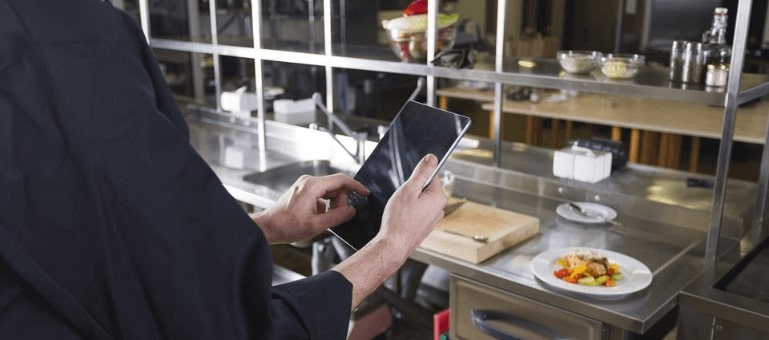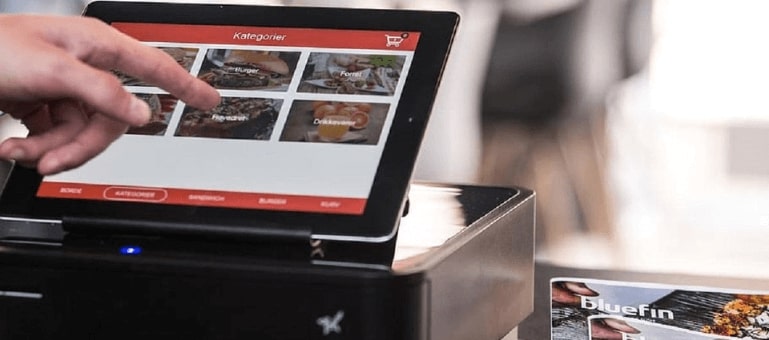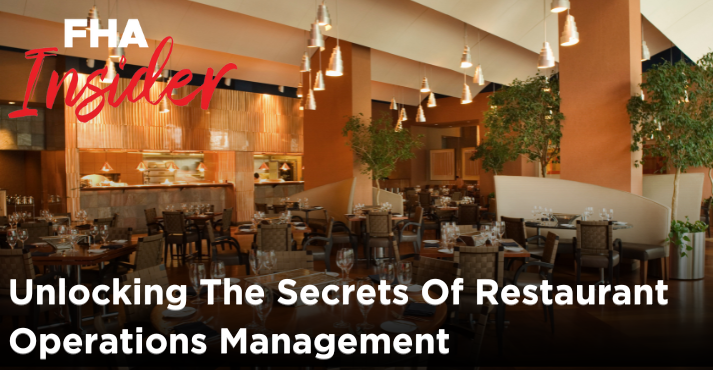Step into the fascinating world of restaurant operations management! This essential aspect plays a critical role in the success of any restaurant, delivering exceptional dining experiences to customers with efficient management.
Restaurant operations management includes a wide range of practices, all aimed at ensuring the smooth functioning of the establishment.
From menu planning to coordinating staff schedules and inventory management, each detail is vital to keeping the restaurant running and becoming a successful establishment.
The importance of efficient restaurant management cannot be overstated. It allows us to meet customer demands promptly, maintain high-quality standards, and consistently deliver delightful dining experiences.
A well-managed restaurant attracts new customers and fosters loyalty among existing patrons.
At the heart of it, all lies the pursuit of customer satisfaction. By understanding the needs and preferences of our guests, we can tailor our services to create memorable dining experiences.
Attentive service, delicious dishes, and a welcoming ambiance work in harmony to leave a lasting impression on our customers.
This guide explores various aspects of restaurant operations management deeper, providing practical insights and actionable tips to help your restaurant thrive.
Whether you’re a seasoned restaurateur or an aspiring entrepreneur, mastering the art of restaurant operations is key to building a thriving and prosperous culinary venture.
So, let’s see and discover the keys to running a restaurant that makes our valued customers happy and content!
The Pillars of Restaurant Operations Management

Running a successful restaurant is like putting together a whole system that needs to run seamlessly. And the key piece is restaurant operations management.
It’s all about making smart choices, careful planning, and doing things efficiently to create fantastic dining experiences.
In this guide, we’ll explore the essential parts of operations management in the restaurant and how they help your restaurant do well.
These basics make a restaurant tick, from managing your staff and taking care of customers to handling supplies and planning the menu.
So, let’s dive into this world of restaurant operations management and find out what makes a restaurant thrive.
1. Front-of-House Operations
Front-of-house operations are the face of your restaurant, responsible for creating that all-important first impression and a key element in restaurant operations.
As guests step through the entrance, the front-of-house team sets the tone for a pleasant dining experience. Let’s explore the key aspects that make front-of-house operations run smoothly and leave guests delighted.
Guest Reception: A Warm and Inviting Welcome
- A warm and welcoming host or hostess guides guests to their dining area and table.
- Greeting each guest with a genuine smile and friendly demeanor creates an immediate sense of comfort and anticipation.
- Efficiently managing reservations and waitlists ensures a positive start, leaving guests with a favorable impression even before they take their first bite.
Table Management: Maximizing Space, Minimizing Wait Times
- The art of table management requires precision.
- Organizing table assignments and optimizing seating arrangements are crucial for maximizing the use of dining space while minimizing wait times.
- Skillfully juggling reservations and walk-in guests ensures that tables are occupied efficiently, leading to a smoother flow of service.
Seamless Service: Choreographing Culinary Delights
- Seamless service is the key component of front-of-house operations.
- Coordinating with servers, ensuring timely food delivery, and promptly addressing customer needs contribute to s
- Attentive servers anticipate guest preferences, make recommendations, and go the extra mile to create an enjoyable dining experience.
Front-of-house operations play a vital role in customer satisfaction. A well-managed front-of-house team creates a comfortable and inviting ambiance, making guests feel valued and eager to return.
When guests are met with warmth and professionalism, it sets the stage for a memorable dining experience.
2. Back-of-House Operations
Behind the scenes of a restaurant, there’s a bustling world of back-of-house operations where culinary magic happens. Let’s explore the key elements of efficient back-of-house operation management.
Kitchen Management: The Heart of Culinary Creations
- The kitchen is the center of any restaurant, where skilled chefs and cooks work harmoniously to create delectable dishes that leave customers happy.
- Proper kitchen organization and workflow optimization ensure culinary creations are crafted precisely and passionately.
Food Preparation: Attention to Detail
- Meticulous attention goes into preparing each meal, ensuring that every ingredient is fresh and carefully selected to meet the highest standards of taste and presentation.
- Skillful preparation techniques and adherence to recipes guarantee that every dish is served just right.
Ensuring Quality Food: The Pursuit of Excellence
- Food quality control is a top priority in back-of-house operations.
- Regular checks and quality assurance procedures are in place to maintain consistency, ensuring that each dish meets the restaurant’s standards of excellence.
Timely Service: A Harmony of Coordination
- The back-of-house team works in coordination with the front-of-house to ensure dishes promptly reach the table.
- Precise coordination between chefs and servers ensures a seamless flow of service, leaving guests with a memorable and enjoyable dining experience.
Optimizing Inventory and Supplies
- Efficient back-of-house operations involve managing inventory and supplies with foresight and precision.
- Keeping track of stock levels, minimizing wastage, and maintaining a well-stocked kitchen contribute to smooth operations and cost-effectiveness.
Embracing Kitchen Technology
- The modern kitchen embraces technology to enhance efficiency and precision.
- Kitchen equipment, digital timers, and cooking tools aid in maintaining consistency and elevating quality.
Culinary Creativity and Innovation
- The back-of-house is where culinary creativity plays its role.
- Chefs experiment with new flavors, techniques, and presentations, keeping the restaurant’s menu fresh and exciting for returning customers.
From kitchen management to food preparation and quality control, this vital aspect of operation management in restaurants plays a central role in delivering an unforgettable dining experience.
3. Staff Training and Development
When it comes to restaurant operation management, continuous staff training and development are the cornerstones of success. Consider these essential points:
- Enhancing Service Quality: Well-trained staff can deliver exceptional service, leaving customers delighted and coming back for more.
- Efficient Operations: With improved skills, your team can work more efficiently, reducing wait times and enhancing overall productivity.
- Training Workshops: Organizing workshops and seminars to keep employees up-to-date with industry trends and best practices.
- Skill Enhancement: Investing in skill development boosts employee confidence and ensures they easily handle challenges.
- Service Standards: Consistent training reinforces your restaurant’s service standards, creating a cohesive and professional environment.
By prioritizing staff training and development, your restaurant sets itself apart, creating a remarkable dining experience that guests will cherish and share with others.
Restaurant Workflow and Procedures

A well-organized restaurant workflow and efficient procedures are the backbone of a successful restaurant. From the moment customers step into the final bill payment, smooth workflows ensure seamless operations.
Let’s explore the importance of well-defined procedures that keep your restaurant running like clockwork.
1. Streamlining Service Workflow
Delivering exceptional service and reducing guest wait times are paramount in the world of restaurant operations management. You can achieve this by streamlining your restaurant’s workflow. Here’s how:
Efficient Reservation Management: Streamlining Bookings for Seamless Service
- The key element of effective workflow management is the implementation of a structured reservation system.
- This allows you to handle bookings more easily, eliminating waiting crowds and giving customers confidence that their dining experience will be well-attended.
- A well-organized reservation system enables you to optimize your seating capacity and assign tables correctly, reducing wait times and increasing client satisfaction.
Timely Seating Arrangements: Quick and Smooth Guest Accommodation
- In a bustling restaurant, quick and efficient seating arrangements are essential.
- Guests appreciate being seated promptly upon arrival, setting the stage for a smooth flow of service.
- An attentive front-of-house team ensures that each guest is comfortably accommodated, enhancing the overall dining experience.
By streamlining your restaurant’s workflow, your team can coordinate seamlessly, providing timely service that impresses and satisfies customers.
A well-organized approach enhances service quality, creates a delightful dining experience, and makes guests eager to return for more.
Striking the right balance between efficient reservation management and timely seating arrangements contributes to a memorable dining journey, turning guests into loyal patrons who eagerly await their next delightful visit.
2. Order Processing and Kitchen Coordination
Efficient order processing and seamless kitchen coordination are vital components of restaurant operations management. Ensuring timely and accurate food preparation is essential to deliver a delightful dining experience to customers.
- POS Integration: Integrate your Point of Sale system with the kitchen to transmit orders instantly, reducing manual errors and speeding up the process.
- Order Tickets: Organize clear and concise order tickets, enabling cooks to understand and prepare each dish accurately.
- Expedited Cooking: Implement expedited cooking methods for faster preparation, especially during peak hours.
By optimizing order processing and kitchen coordination, your restaurant can meet customer expectations, serve fresh and delicious meals promptly, and leave a lasting impression on diners.
The synchronization between front-of-house and back-of-house operations creates a harmonious experience that keeps guests coming back for more.
3. Guest Feedback and Resolution
Guest feedback is a powerful tool in restaurant operations management, providing valuable insights into customer satisfaction and areas for improvement.
By collecting feedback through customer surveys and analyzing it proactively, you can identify issues promptly and work towards resolving them effectively.
Addressing guest concerns enhances the dining experience and fosters loyalty, as customers appreciate a restaurant that values their opinions and strives to deliver the best service possible.
Inventory and Cost Management

In the dynamic world of restaurant operations management, effective inventory and cost management play a critical role in sustaining profitability and ensuring smooth day-to-day operations.
Keeping a keen eye on inventory levels, minimizing wastage, and optimizing procurement is essential to maintain cost efficiency.
Let’s look into the significance of efficient inventory and cost management and how it contributes to the success of your restaurant business.
1. Inventory Control and Stock Monitoring
In restaurant operations, mastering inventory control is crucial for cost management. Implementing effective stock management strategies enables you to closely monitor inventory levels, minimize wastage, and optimize food and beverage costs.
Utilizing inventory software and regular stock monitoring allows you to identify trends, make informed decisions, and streamline procurement.
Your restaurant can operate efficiently and maintain profitability by minimizing unnecessary expenditures and ensuring sufficient stock levels.
Effective inventory control plays a pivotal role in achieving financial stability while delivering exceptional dining experiences to your valued customers.
2. Cost Analysis and Budgeting
Strategic cost analysis and budgeting are vital for maintaining profitability and financial stability in restaurant operations management.
You can allocate budgets effectively and make informed decisions by carefully tracking expenses and implementing sound financial planning. Regular cost analysis allows you to identify areas for improvement and maximize profits.
Budgeting ensures that your restaurant operates within its means while delivering quality experiences. Efficient management of finances leads to long-term success and the ability to provide exceptional dining experiences.
Technology Integration in Restaurant Operations

In today’s competitive landscape of restaurant operations management, embracing technology is no longer an option; it’s a necessity.
From streamlining processes to enhancing customer experiences, technology integration is a game-changer for modern eateries. Embracing innovative solutions ensures efficiency, accuracy, and improved service quality, making your restaurant stand out in a tech-driven world.
1. POS Systems and Order Management
In the realm of operations management in restaurants, modern Point of Sale (POS) systems have revolutionized the way eateries operate.
Embracing these advanced solutions brings a plethora of benefits, streamlining order management, payment processing, and customer data collection.
- Quick and Accurate Order Management: POS systems enable servers to relay orders to the kitchen instantly, minimizing wait times and ensuring accurate preparation.
- Seamless Digital Transactions: Contactless payment options offer customers a secure and hassle-free payment process, enhancing the overall dining experience.
- Valuable Customer Data Collection: POS systems collect valuable customer data, helping restaurants better understand their clientele for personalized service and targeted marketing.
Incorporating POS systems into your restaurant operations management elevates service quality, increases productivity, and enhances the overall dining experience.
Embrace technology to stay ahead in the ever-evolving culinary landscape, where operations management in restaurants is now seamlessly connected with innovation.
2. Online Reservations and Delivery Platforms
In the digital era of restaurant operations management, embracing online reservation systems and delivery platforms has become essential for success.
These modern solutions hold immense significance as they help restaurants reach a broader customer base and enhance overall convenience for both patrons and owners.
Optimizing Restaurant Bookings through Online Reservations
Implementing user-friendly reservation apps enables customers to book tables effortlessly, increasing the chances of repeat visits. Additionally, restaurants can efficiently manage their bookings and allocate resources accordingly.
Expanding Services with Delivery Platforms
Partnering with food delivery apps allows restaurants to tap into a wider audience, offering the convenience of enjoying their favorite dishes in the comfort of their homes. This expansion boosts revenue and fosters customer loyalty through enhanced convenience.
Embracing online reservations and delivery platforms revolutionizes restaurant operations, offering a seamless and connected dining experience.
By adapting to the digital landscape, restaurants can thrive in a competitive market where operations management relies on the power of technology.
Staff Scheduling and Shift Management

Efficient staff scheduling and shift management are crucial components of operations management in a restaurant. Properly managing your team’s working hours ensures the right number of staff members are available at the right times, optimizing productivity while controlling labor costs.
Balancing the workload across shifts is essential to maintain a smooth operation and deliver exceptional service consistently.
By utilizing advanced scheduling tools and considering factors like staff availability and peak hours, restaurants can create balanced and effective schedules that lead to a harmonious and well-functioning team.
Embracing technology and strategic planning in staff scheduling benefits the restaurant’s overall efficiency and enhances employee satisfaction and customer experiences.
Efficient Staff Scheduling
In the dynamic world of restaurant operations management, effective staff scheduling is essential to ensure adequate coverage while minimizing labor costs.
Finding the right equilibrium between meeting operational demands and controlling expenses is key to the restaurant’s success. Let’s explore some insights into efficient staff scheduling practices.
- Rota Planning: Creating a well-structured rota (schedule) is the foundation of efficient staff scheduling. Consider peak hours, busy days, and employee availability to optimize coverage.
- Labor Optimization: Align staff shifts with customer footfall to maximize productivity during busy periods and reduce staffing during slower hours.
- Flexible Shifts: Offer flexible shifts to accommodate part-time and full-time employees’ preferences while meeting the restaurant’s needs.
- Cross-Training Employees: Cross-training employees in different roles allows for greater flexibility in scheduling and ensures coverage during unexpected staff shortages.
- Monitoring Performance: Track staff performance and attendance to identify opportunities for improvement and address any issues proactively.
By implementing these effective staff scheduling practices, restaurants can balance operational demands and labor costs perfectly.
A well-organized and optimized workforce not only improves overall efficiency but also enhances employee satisfaction, leading to a positive impact on customer experiences.
Embracing smart shift management ensures that the restaurant operates like a well-oiled machine, delivering exceptional service and remaining competitive in the bustling world of restaurant operations management.
Conclusion
In this comprehensive Restaurant Operations Management guide, we explored the essential aspects that contribute to a successful and thriving culinary venture.
From front-of-house operations to back-of-house efficiency, every component is critical to providing excellent guest experiences, guaranteeing financial stability, and laying the groundwork for long-term success.
Effective restaurant management is the foundation of a well-run institution. By streamlining service processes and enhancing reservation systems, restaurants may reduce wait times, increase customer happiness, and build long-term relationships with their consumers.
Profitability demands intelligent inventory management and cost analysis. Restaurants may achieve financial stability by reducing waste and optimizing food and beverage costs, which allows them to invest in employee training and technological advancements that improve service quality.
In today’s competitive market, embracing technology is no longer optional but rather required. Integrating POS systems and utilizing online reservation and delivery platforms broadens reach and convenience while satisfying the expectations of tech-savvy clients.
Staff scheduling that is effective offers appropriate coverage while lowering labor expenditures. Restaurants may provide smooth service by keeping a well-balanced crew and cultivating employee happiness.
This way, restaurants can deliver seamless service, creating memorable experiences that keep guests coming back.






